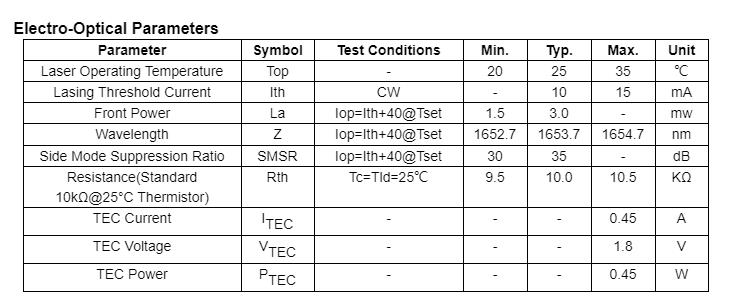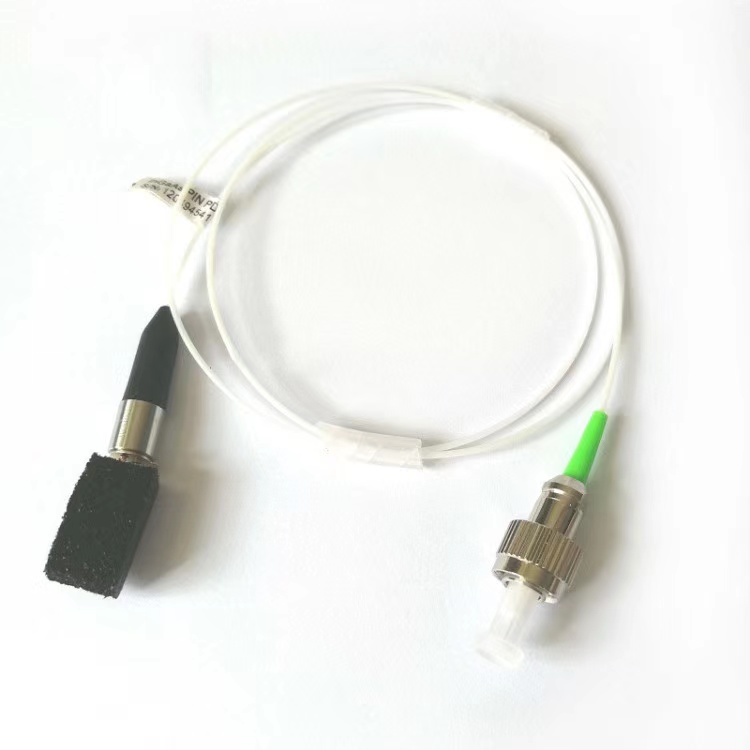1653nm DFB Laser diode cooled coaxial pigtailed TOSA for methane gas detector. There are many kinds of sensors for detecting methane. A gas detector for measuring methane selects a wavelength (1,653 nm) suitable for measurement, which is absorbed by methane but not affected by other gases such as water vapor, and stabilizes the emission wavelength of the DFB-LD to that wavelength. wo types of sensors, infrared and catalytic heat of combustion, are commonly used for measuring combustible gases such as methane in non- mining applications.
Features
Low threshold current;
High output power;
Ultra small form-factor 8-pin;
Very low TEC power consumption;
Long history of proven field reliability;
Very high reliability design;
Laser qualified as per intent of Telcordia GR-468;
Operating temperature range: -5℃ to +75℃.
Applications
Methane gas sensor.
Electro-Optical Parameters

For methane detection Applications:
Remote sensing is achieved using infrared laser absorption spectroscopy. As methane absorbs a specific wavelength of infrared light, these instruments emit infrared lasers. The laser beam is directed to wherever the leak is suspected, such as a gas pipe or a ceiling.
Laser gas detectors allow for the detection of methane gas from a safe distance without the need for a worker to enter certain hazardous areas. Utilising infrared laser technology, methane leaks can be efficiently confirmed through the use of pointing a laser beam towards the suspected leak, or along the survey line.
